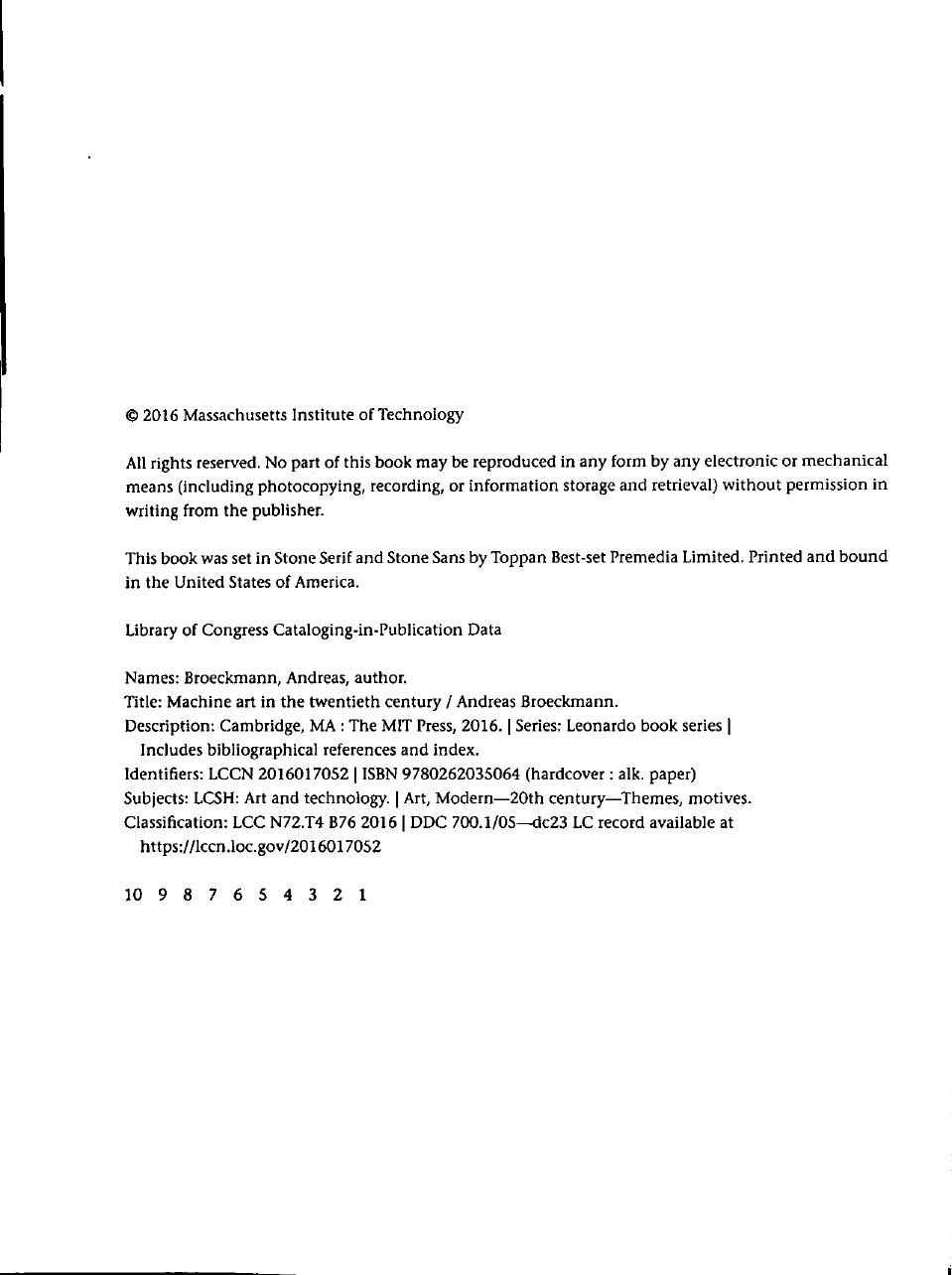Machine Art in the Twentieth Century by Andreas Broeckmann

Author:Andreas Broeckmann [Broeckmann, Andreas]
Language: eng
Format: epub, pdf
Publisher: The MIT Press
Published: 2017-01-27T00:00:00+00:00
This method helped Molnar “to distance myself from the inherited cultural baggage, to free myself from the influences of civilization that shape us and from the cultural ‘ready-mades’, and to find combinations of forms that had never been seen before.”63
As regards the operation of the machine imaginaire, Molnar would first define the classes of objects to be used in a particular work: squares, rectangles, and shapes with variable angles and sizes, lines and their thickness, etc. Then she defined the rules, the program, according to which the configuration of the objects would be established and iterated. This program was then executed in meticulous drawings, Molnar making precise notes about the steps that she had already completed, in order to avoid omissions or repetitions. She did not always use the same drawing techniques for the execution of the program, but in general she only used black and white, after experiments with colors had proved overly complicated. The colors were added later, again based on a systematic procedure using color charts. In order to avoid specific unwanted cases—like, for instance, diagonals in consecutive rows touching each other, forming continuous lines—Molnar introduced additional rules that would exclude, in this case, certain angles (e.g., 45 and 135 degrees).
Molnar’s procedure was not designed to produce specific and unique graphics; it is a method for visualizing all possible iterations of a predefined program. From these instantiations, and based on her own, subjective sense of aesthetics, she then made a selection which would be realized in a more elaborate visual form, such as drawings or paintings. “First I thought that there would be one correct version, but then I understood that I am more interested in situations than in individual cases, in the same sense as I don’t believe in a single artwork.”64 The criteria of the selection are subjective and intuitive: “In general, I have understood that I like things that are either close to total order, or close to total chaos. I still don’t so much like anything between those two states.”65
When the pioneers of computer graphics, like the engineers-cum-artists Georg Nees, Frieder Nake, or Michael Noll, were able to use mainframe computers for the creation of the first graphic images in the early 1960s, with the challenges of writing a program in an appropriate programming language that could be executed by a computer and whose result could be printed or drawn by a plotter, the complexity both of the technical apparatus and of the potential visual output expanded rapidly.66
In the broader context of our discussion of the machine in art, a document by the German mathematician and early computer artist Frieder Nake is of particular interest, because it shows the prevalence of the conception of the “machine” as a specific, subjective category. Nake’s “Production of Drawings, Sound Sequences, and Texts with Electronic Computing Systems,” published by the Deutsches Rechenzentrum (German Computing Center) in Darmstadt in 1966, provides “remarks on the programming of computer graphics” with the aim of instructing art schools in the potentials of the new technological means.
Download
Machine Art in the Twentieth Century by Andreas Broeckmann.pdf
This site does not store any files on its server. We only index and link to content provided by other sites. Please contact the content providers to delete copyright contents if any and email us, we'll remove relevant links or contents immediately.
| Automotive | Engineering |
| Transportation |
Whiskies Galore by Ian Buxton(41932)
Introduction to Aircraft Design (Cambridge Aerospace Series) by John P. Fielding(33084)
Small Unmanned Fixed-wing Aircraft Design by Andrew J. Keane Andras Sobester James P. Scanlan & András Sóbester & James P. Scanlan(32760)
Craft Beer for the Homebrewer by Michael Agnew(18191)
Turbulence by E. J. Noyes(7974)
The Complete Stick Figure Physics Tutorials by Allen Sarah(7332)
Kaplan MCAT General Chemistry Review by Kaplan(6893)
The Thirst by Nesbo Jo(6870)
Bad Blood by John Carreyrou(6579)
Modelling of Convective Heat and Mass Transfer in Rotating Flows by Igor V. Shevchuk(6405)
Learning SQL by Alan Beaulieu(6233)
Weapons of Math Destruction by Cathy O'Neil(6202)
Man-made Catastrophes and Risk Information Concealment by Dmitry Chernov & Didier Sornette(5948)
Digital Minimalism by Cal Newport;(5695)
Life 3.0: Being Human in the Age of Artificial Intelligence by Tegmark Max(5504)
iGen by Jean M. Twenge(5382)
Secrets of Antigravity Propulsion: Tesla, UFOs, and Classified Aerospace Technology by Ph.D. Paul A. Laviolette(5329)
Design of Trajectory Optimization Approach for Space Maneuver Vehicle Skip Entry Problems by Runqi Chai & Al Savvaris & Antonios Tsourdos & Senchun Chai(5034)
Pale Blue Dot by Carl Sagan(4945)
